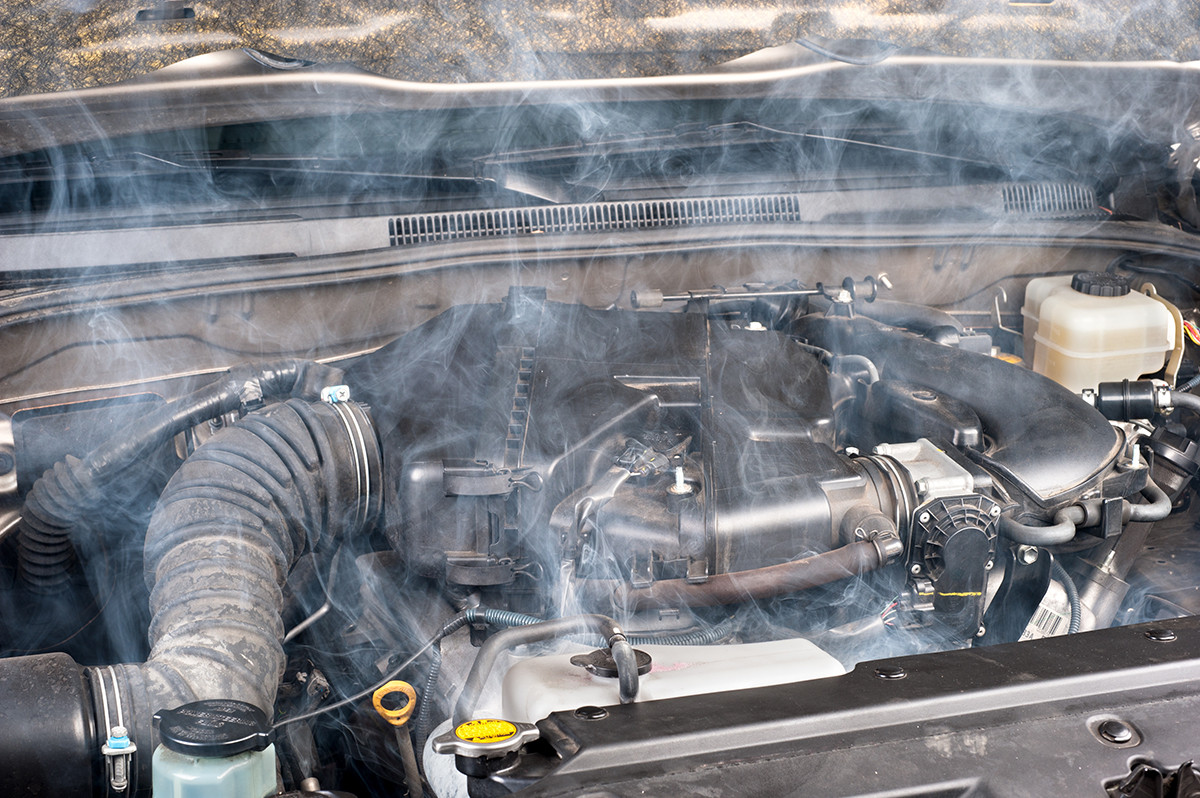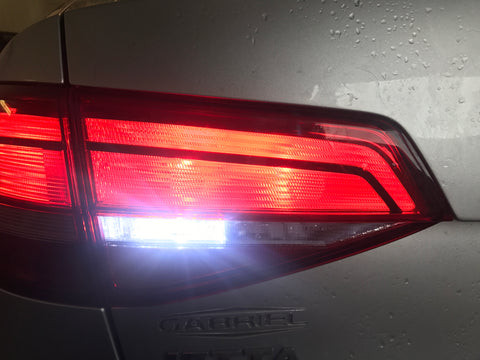How Much Does It Cost To Fix Car Paint Chips? Expert Guide

Fixing car paint chips doesn’t have to break the bank; the cost generally ranges from $150 to $600 per panel depending on the severity and method. CARDIAGTECH.NET offers the tools and expertise to tackle these repairs efficiently, ensuring your car looks its best without exorbitant costs. From minor touch-ups to more extensive repairs, understanding your options can save you money and maintain your vehicle’s appearance. Contact us today and let us help you get the right auto repair solutions to restore your vehicle to its original glory.
1. Understanding Car Paint Chip Damage
Before diving into the costs, it’s essential to accurately assess the type and extent of the damage. Proper identification ensures you choose the most appropriate and cost-effective repair method.
1.1. Types of Paint Chips
Paint chips come in various forms, each requiring a specific approach to repair. Here’s a breakdown:
- Minor Paint Chips: These are small, typically no larger than the size of a pencil eraser.
- Extensive Paint Chips: These are larger, often with cracking or peeling paint around the edges.
 Minor Car Paint Chips
Minor Car Paint Chips
Alt text: Close-up of minor car paint chips, highlighting small blemishes.
1.2. Identifying Scratches
Scratches also vary in depth and length, influencing the repair strategy.
- Minor Scratches: These are only in the clear coat, disappearing briefly when wet, and are usually less than 6 inches long.
- Extensive Scratches: These go deeper than the clear coat, reaching the paint or even the metal, and often exceed 6 inches in length.
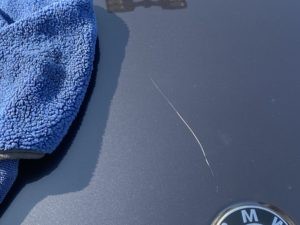 Minor Scratch
Minor Scratch
Alt text: A minor scratch on a car’s surface, showcasing superficial damage.
1.3. Assessing Scrapes
Scrapes can range from superficial to severe, depending on the impact and surface area affected.
- Minor Scrapes: These are superficial, affecting only the surface of the paint, with no exposed metal.
- Extensive Scrapes: These involve misshapen surfaces, cover larger areas, or completely remove the paint, exposing the metal underneath.
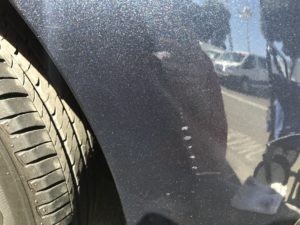 Minor Scrape
Minor Scrape
Alt text: Image of a minor car scrape, illustrating surface-level paint damage.
1.4. Dealing with Dents
Dents accompanied by paint damage require dent repair before any paint work to ensure a flawless finish.
- Minor Dents: These are on flat surfaces and relatively easy to fix.
- Extensive Dents: These are on curved surfaces, requiring more skill, and sometimes are irreparable if the metal is severely bent.
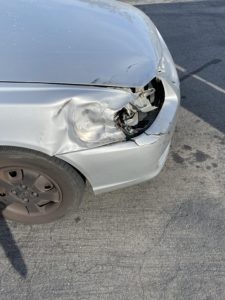 Extensive Dent
Extensive Dent
Alt text: A close-up of an extensive dent on a vehicle, showing significant metal deformation.
2. Factors Influencing the Cost of Car Paint Chip Repair
Several factors influence the cost of fixing car paint chips. Understanding these can help you make informed decisions.
2.1. Severity of the Damage
The extent of the damage is a primary cost determinant. Minor chips and scratches are cheaper to fix than extensive damage that requires more labor and materials.
2.2. Type of Paint
The type of paint your car uses (e.g., metallic, pearlescent, or standard) affects the cost. Matching these specialized paints requires more skill and can be more expensive.
2.3. Repair Method
Different repair methods, such as touch-up, mobile spray paint services, or body shop repairs, have varying costs. Choosing the right method for the damage can balance cost and quality.
2.4. Vehicle Make and Model
Luxury or rare vehicles may have higher repair costs due to the specialized parts and expertise required. Standard models typically have more accessible and affordable repair options.
2.5. Location
Geographic location impacts repair costs. Areas with a higher cost of living generally have more expensive auto repair services.
2.6. Labor Costs
Labor rates vary by repair shop. Highly skilled technicians command higher rates, but their expertise can ensure a higher quality repair.
2.7. Materials Used
The quality of materials used, such as paints, clear coats, and fillers, affects the cost. Higher-quality materials provide a better finish and longer-lasting repair.
3. Cost-Effective Repair Options
Exploring cost-effective repair options helps keep expenses down without compromising the quality of the repair.
3.1. DIY Touch-Up Kits
For minor chips and scratches, DIY touch-up kits are an affordable option. These kits include paint that matches your car’s color code, allowing you to fill in the damage yourself. However, the results may not match professional repairs.
3.2. Mobile Repair Services
Mobile repair services are a convenient and often cheaper alternative to body shops. They come to your location and perform minor repairs, such as chip and scratch fixes, on-site.
3.3. Local Body Shops
Local body shops offer comprehensive repair services. While they may be more expensive than mobile services, they provide higher-quality repairs, especially for extensive damage.
3.4. Paintless Dent Repair (PDR)
If the paint chip is accompanied by a dent, PDR can be a cost-effective way to remove the dent without damaging the paint. This method preserves the original paint job, saving on repainting costs.
4. Average Costs for Different Types of Car Paint Chip Repairs
Understanding the average costs for different types of repairs helps you budget effectively.
4.1. Minor Paint Chip Repair Cost
Minor paint chip repairs typically cost between $150 and $250 when using a mobile technician. This includes filling the chip with matching paint and applying a clear coat for protection.
4.2. Extensive Paint Chip Repair Cost
Extensive paint chip repairs, which require more preparation and materials, can range from $250 to $600 per panel at a body shop.
4.3. Minor Scratch Repair Cost
Minor scratch repairs using touch-up methods usually fall between $150 and $250. This involves cleaning the area, applying touch-up paint, and polishing the surface.
4.4. Extensive Scratch Repair Cost
Extensive scratch repairs that require sanding, filling, and repainting can cost $250 to $600 per panel at a body shop.
4.5. Minor Scrape Repair Cost
Minor scrape repairs are similar in cost to minor scratch repairs, ranging from $150 to $250 for touch-up services.
4.6. Extensive Scrape Repair Cost
Extensive scrape repairs, which may involve bodywork and repainting, can cost $250 to $600 or more per panel, depending on the extent of the damage.
5. DIY vs. Professional Car Paint Chip Repair
Deciding between DIY and professional repair depends on your skills, budget, and desired outcome.
5.1. Advantages of DIY Repair
- Cost Savings: DIY repairs are significantly cheaper than professional services.
- Convenience: You can perform the repairs at your own pace and schedule.
- Learning Experience: DIY repair allows you to learn about car care and maintenance.
5.2. Disadvantages of DIY Repair
- Quality Concerns: DIY repairs may not match the quality of professional work.
- Color Matching: Achieving a perfect color match can be challenging.
- Time Commitment: DIY repairs can be time-consuming, especially for beginners.
5.3. Advantages of Professional Repair
- High-Quality Results: Professional technicians have the skills and tools to deliver superior results.
- Color Matching Expertise: Professionals can precisely match your car’s paint color.
- Time Efficiency: Professional repairs are typically faster than DIY methods.
5.4. Disadvantages of Professional Repair
- Higher Costs: Professional repairs are more expensive than DIY options.
- Scheduling: You may need to schedule an appointment and wait for the repair to be completed.
- Inconvenience: Dropping off and picking up your car can be inconvenient.
6. Step-by-Step Guide to DIY Car Paint Chip Repair
If you opt for DIY repair, follow these steps for the best results.
6.1. Gather Your Supplies
- Touch-up paint that matches your car’s color code
- Fine-grit sandpaper
- Rubbing alcohol
- Primer
- Clear coat
- Applicators (small brushes or toothpicks)
- Soft cloths
6.2. Prepare the Area
Clean the area around the paint chip with rubbing alcohol to remove dirt and wax. Lightly sand the edges of the chip to smooth them out.
6.3. Apply Primer
Apply a thin layer of primer to the chip and let it dry completely. This helps the touch-up paint adhere properly.
6.4. Apply Touch-Up Paint
Using a small brush or toothpick, carefully apply the touch-up paint to the chip. Apply thin layers, allowing each layer to dry before adding the next. This prevents the paint from clumping.
6.5. Apply Clear Coat
Once the touch-up paint is dry, apply a thin layer of clear coat to protect the paint and provide a glossy finish.
6.6. Polish the Area
After the clear coat is dry, use a soft cloth to gently polish the area. This blends the repaired chip with the surrounding paint.
7. Maintaining Your Car’s Paint to Prevent Chips
Preventive measures can significantly reduce the occurrence of paint chips.
7.1. Regular Washing and Waxing
Regularly washing and waxing your car protects the paint from environmental elements and minor abrasions.
7.2. Protective Coatings
Consider applying a protective coating, such as a ceramic coating or paint protection film, to shield your car’s paint from chips and scratches.
7.3. Safe Driving Practices
Avoid driving too closely behind other vehicles, especially on gravel roads, to minimize the risk of flying debris causing paint chips.
7.4. Parking Strategically
Park in covered areas or away from other cars to reduce the chances of accidental dings and scratches.
8. Choosing the Right Professional Repair Service
If you decide to go with professional repair, here’s how to choose the right service.
8.1. Check Reviews and Ratings
Look for body shops with positive reviews and high ratings online. This indicates customer satisfaction and quality workmanship.
8.2. Ask for Recommendations
Ask friends, family, or colleagues for recommendations. Personal referrals are often reliable.
8.3. Get Multiple Estimates
Obtain estimates from several body shops to compare prices and services. Be sure to ask for a detailed breakdown of the costs.
8.4. Verify Certifications
Ensure the body shop is certified by reputable organizations, such as ASE (Automotive Service Excellence). This ensures the technicians have the necessary skills and training.
8.5. Inspect the Facility
Visit the body shop to inspect the facility. A clean, organized shop is a good sign of professionalism and attention to detail.
9. When to Choose Professional Car Paint Chip Repair
Knowing when to opt for professional repair ensures you get the best possible outcome.
9.1. Extensive Damage
If the paint chip is extensive, with cracking or peeling paint, professional repair is necessary to restore the car’s appearance.
9.2. Multiple Chips and Scratches
If your car has multiple chips and scratches, professional repair ensures a consistent and high-quality finish.
9.3. Color Matching Difficulties
If you are unable to accurately match your car’s paint color with DIY kits, professional repair is the best option.
9.4. Dents and Body Damage
If the paint chip is accompanied by a dent or other body damage, professional repair is essential to address both issues effectively.
10. Innovative Products from CARDIAGTECH.NET
CARDIAGTECH.NET offers a range of innovative products designed to assist with car paint chip repair, providing both DIY enthusiasts and professional technicians with the tools they need.
10.1. High-Quality Touch-Up Paint Kits
CARDIAGTECH.NET provides touch-up paint kits that include high-quality paints matched to your vehicle’s color code. These kits ensure a seamless repair.
10.2. Precision Applicators
Our precision applicators, such as micro-brushes and fine-tipped applicators, allow for accurate and controlled paint application, minimizing mistakes and ensuring a flawless finish.
10.3. Surface Preparation Tools
CARDIAGTECH.NET offers surface preparation tools, including sanding blocks, rubbing alcohol, and cleaning solutions, to prepare the area for repair.
10.4. Protective Coatings
Our protective coatings, such as ceramic coatings and paint protection films, shield your car’s paint from future chips and scratches.
10.5. Professional Repair Tools
For professional technicians, CARDIAGTECH.NET offers a range of professional repair tools, including spray guns, paint mixing systems, and bodywork equipment.
11. Maximizing the Life of Your Car’s Paint Job
Proper care and maintenance can significantly extend the life of your car’s paint job.
11.1. Regular Washing
Wash your car regularly to remove dirt, grime, and contaminants that can damage the paint. Use a pH-balanced car wash soap and a soft microfiber cloth.
11.2. Waxing
Apply wax to your car every few months to protect the paint and provide a glossy finish. Wax creates a barrier against environmental elements and makes it easier to remove dirt and contaminants.
11.3. Protective Coatings
Consider applying a ceramic coating or paint protection film for long-term protection. These coatings provide a durable shield against chips, scratches, and UV damage.
11.4. Avoid Harsh Chemicals
Avoid using harsh chemicals or abrasive cleaners on your car’s paint. These can strip away the protective layers and damage the finish.
11.5. Park in the Shade
Park your car in the shade whenever possible to protect the paint from the sun’s harmful UV rays. Prolonged exposure to sunlight can cause the paint to fade and deteriorate.
12. Frequently Asked Questions (FAQs)
12.1. How much does it cost to fix car paint chips?
The cost to fix car paint chips ranges from $150 to $600 per panel, depending on the severity of the damage and the repair method.
12.2. Can I fix car paint chips myself?
Yes, you can fix minor car paint chips yourself using DIY touch-up kits. However, professional repair is recommended for extensive damage.
12.3. What is the best way to prevent car paint chips?
Regular washing, waxing, protective coatings, and safe driving practices are the best ways to prevent car paint chips.
12.4. How do I find the right paint color for my car?
Your car’s paint code is usually located on a sticker inside the driver’s side door or in the engine compartment. You can also contact your car manufacturer or a local auto parts store for assistance.
12.5. Is mobile car paint repair a good option?
Yes, mobile car paint repair is a convenient and cost-effective option for minor chips and scratches.
12.6. How long does car paint chip repair take?
DIY car paint chip repair can take a few hours, while professional repair can take anywhere from a few hours to a few days, depending on the extent of the damage.
12.7. What is paintless dent repair (PDR)?
Paintless dent repair (PDR) is a method of removing dents without damaging the paint. It is a cost-effective option for dents accompanied by paint chips.
12.8. How do I choose the right body shop?
Check reviews and ratings, ask for recommendations, get multiple estimates, verify certifications, and inspect the facility to choose the right body shop.
12.9. What are the benefits of ceramic coating?
Ceramic coating provides long-term protection against chips, scratches, UV damage, and environmental elements, keeping your car’s paint looking new.
12.10. What is the difference between touch-up paint and professional paint?
Touch-up paint is designed for small repairs and may not match the quality of professional paint. Professional paint is mixed and applied by skilled technicians for a seamless finish.
13. Call to Action
Don’t let unsightly paint chips diminish the appearance and value of your car. Whether you’re a seasoned auto technician or a DIY enthusiast, CARDIAGTECH.NET has the perfect solutions for you. Our high-quality tools and expert guidance ensure a flawless finish every time.
Ready to restore your vehicle’s beauty? Contact CARDIAGTECH.NET today for personalized advice and product recommendations. Call us at +1 (641) 206-8880, visit our website at CARDIAGTECH.NET, or stop by our location at 276 Reock St, City of Orange, NJ 07050, United States. Let us help you keep your car looking its best!



